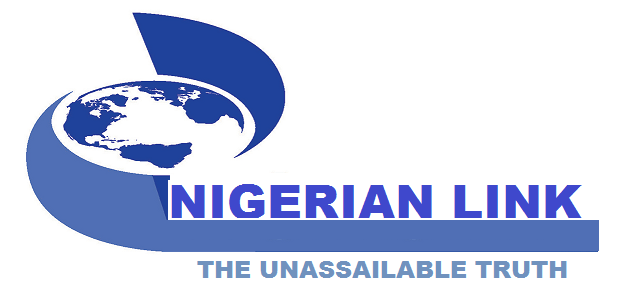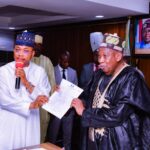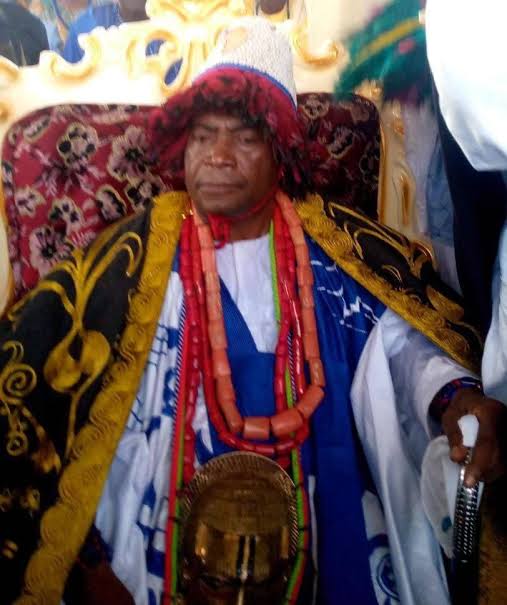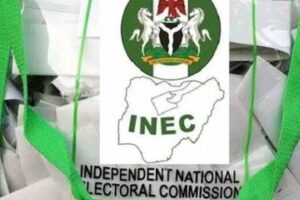Between the November 9th to November 18th 2021 the world witnessed the announcement and ascension rites of Attah Igala Mathew Opaluwa to the ancient paramount throne of the Igala Kingdom. Boasting of a tradition that has lasted about four centuries the Igala Kingdom undoubtedly remains in the annals of history as one of the greatest royal civilizations in Africa.
According to the late Guru of Igala culture and tradition, Dr Tom Miachi(2012) in his book,The Incarnate Being Phenomenon in African Culture, the Igala people occupy the area of land to the south of the lower reaches of the Benue and east of the Niger rivers at about the confluence of these two great rivers of Nigeria – an area of about 8,000 square kilometers. These two main river thus form natural boundaries to Igala land on the west and north respectively. To the east is Idoma Land and to south,live the northern Igbo of Nsukka.
Miachi(2012) states that the strategic location of Igala land makes it a gateway into the out of the interior of the country, and make possible contact with many other Nigerian people and, later, from about the later part of the first half of the 19th century, with European adventurers, missionaries, trading and government agents. The northern fringes of Igala land, bounded by the Benue River is occupied by non-igala-speaking groups, namely,the Bassa Komo, Bassa-Nge and Ebira Koto. The Bassa Komo “true” Bassa as they call themselves had intermingled with the Gbagi to the North of the Niger Benue confluence before moving down to their present location. The Bassa Komo, with their traditional ruler, the Aguma-Sokwo, are concentrated in farming villages like Oguma the seat of the traditional council and home of the Aguma, Kpanche, and Sheria, known for its popular market, fishing and pottery-making.
Another group of people in that northern area is the Bassa-Nge, whose people are historically and linguistically, of Nupe stock. The Bassa-Nge are also predominantly fishermen and agriculturists, growing mainly rice, yams and cereals such as guinea corn (sorghum) and millet, like their Bassa Komo counterparts. The third group of people in Igalaland are the Ebira-Koto who are a riverine people engaged mainly in fishing and in trading along the Niger and the Benue rivers. According to Oral tradition, they may have migrated from Ebira-Okene area at some distant past which cannot be reckoned through oral tradition, the main source of historical data available. However today, although Ebira-Koto living in Igala Land identify themselves with Koton Karfe, their original and Major home to the North of the confluence, they also align themselves with the Igala and the Bassa peoples with whom they now live.
Oral tradition and nineteenth century records show that Igala influence politically, economically and culturally extended far beyond its present borders in all direction. John Boston who is perhaps one of the earliest western historian to research the Igala History observed. “If we assume, as we surely can, that the Niger and Benue rivers played an even more strategic role in the Nigerian past than they do today, then it is clear that the Igala area holds the key to an important chapter of Nigeria history”
Clearly, one implication of this assertion is that the study of other Nigerian Peoples with whom the Igala had interacted can derive benefit from a proper study of the Igala. And this seems to find support in the fact that the political, social and culture history of such peoples like the Bini to the west of the Igala, the Igbo to the south, the Idoma to the east; the Ebira and Bassa speaking peoples to the north, cannot be effectively produced without reference being made to the Igala.
Further afield, beyond its borders, the Igala had contact at people and at war; with the Jukun in the 15th Century (Meek 1931) and with the Bini in the 16th Century (Egharevba 1969). Contact was also made with the Nupe through trade and peaceful alliance as seen in the legend of Tsoede or Edegi, an Igala prince credited in oral tradition to be the founder of the united Nupe monarchy and state (Nadel 1942).
Seton, Armstrong, Clifford ,Ukwudeh, Anago etc cited in J.S Boston”s The Igala Kingdom, all proclaim the influence that the Kingdom wielded at its apogee. Founded about the end of the 17th century, The Kingship institution has spanned almost four centuries which Boston records that –as at 1956- we were in a position to assess the average lengths of the last ten reigns which span a period of average 120 years from 1834 to 1956 applying the average of 12 years per reign to the full king list which contained 25 names an average of about 300 years emerge, if the period 1956 -2021 we are looking at a Kingship institution that is at least 370 or almost 400 years old according to historical accounts, with vestiges of history reflected almost 26 to 30 states of the country. Father Onoja Thaddeus Akpa (2019) in his book ,OJ Cravings of Passion, notes that -today Igala is found to be indigenous in over twenty one states across the nation. According to him, they are:
In Kogi state outside the boundaries of what is today Igala Land- Ajaokuta, Adogo, Kotonkarfe and lokoja; Nassarawa – Doma and Toto; Benue – Otukpo, Otupka, Agila, Ajomachi, Alifata; Niger – Bida; Abia State – Umuogu, Amaogu, Umougu; Anambra – Aguata,Onitsha, Ofemili, Ogidi, Oko, Oyi, Amogu, Agougu, Aguleri. Umuleri etc; Enugu-Nsukka, Iggah, Abbi, Ibagwa, Enugu-Ezike, Etteh, Amufi Ogurugu, Unadu, Obukpa, Nkalagu-Obukpa,Ukpoloogwu; Ebonyi – Nkalaha, Ikwo, Ezza, Izzi, Izhimagbo,(Egwu town) Okposi, Afikpo,bAbakaliki; Imo -Atta community, Ihiajara, Umu-Ogala, Amatta, Oguta, Umu onu; Bayelsa – Nembe; Cross River – Yala, Isobo, Agbo; Delta-Ebu, Aika, Ezeolu, Beneku, Obiaruku, Okpanam, Okapi, Akoku, Umuebu, Amai, IIlah, Okoh, Abbi, Aboh, Ossisa, Asaba, Obi-Anigala, Owa-Abbi, Onu-Aboh, Umoogu, Onu-Obuko, Ogute; Edo state – Illushi, Anegete, Ozigono, Agenebode, Ifeku, Iñele, Ekpeli, Ikpoha, Igara Ajaye; Ekiti – Aye de Ekiti; Lagos – Isale Eko; Osun – Igila ancient town; Rivers – Ndoni, Nkpolu, Nkoro; Taraba – Wukari; Kaduna – kakuri; Ibadan –Ibadan town .
The Circle of succession of the Attah stool which had run unhindered for decades before the arrival of the British was however disrupted by the British principally and by the indigenous wielders of colonial political power in Northern Region. When in 1956 Opaluwa Oguche of the Aju-Ameachor Ruling Family and father of the new monarch, who had been appointed by the Kingmakers and had advanced in the rites of ascension was suddenly supplanted by Alih Christopher Obaje whose Aku Ruling House’s turn was still two places down the line of rotation. He became the favorite of the northern political establishment after he allegedly succumbed to a condition to convert to Islam. For the first time in known history the centuries old succession arrangement was jettisoned, the installation rites already in process was truncated to impose the said Christopher Obaje who converted to Islam few weeks into his reign. He became the first Attah and the last so far who never went through the rigorous rites of ascension.
This technically put the Aju- Ameachor, the ruling house of the new monarch out of power for 105 years during which the Aju-Aku and Aju-Ocholi took turns to rule leaving out Aju-Ameachor and Aju-Akogu.
Thanks to administration of Captain Idris Wada, Governor of Kogi State (2012 to 2016) which expressly re-enacted in 2015 Igala Area Traditional Council (Modification of Native Law and Customs) Order, 2015 Procedure and Regulation for the Ascension to the Stool of the Attah Igala Act which upheld and restored the rotation principle starting with the Aju-Ameachor ruling house.
AJU-AMEACHOR ASCENSION TO THE THRONE
Almost all the phases, rituals, dramaturgy and tradition of the ascension process have been largely kept till date. In the same vein it was apparent that all the role player clans and families take great pride in their cosmologically assigned roles.
The Igalas are no doubt are in need of a new nexus of leadership, a leadership that will restore the pride and core values of Love, tradition, culture, hard work, Unity etc.
As a Civilization that has lasted for several centuries, there is no doubt that Nigeria has a lot to learn from the history, culture, myth, mythology and tradition of the Igala people.
LESSONS FROM THE ASCENSION PROCESS.
Though the process leading to the selection of the current was controversial somewhat with allegations of efforts of some participants in the process to circumvent the law and tradition, the emergence of Mathew Opaluwa upon the approval of the Bello Administration has been greeted as an act of Justice and fairness after 105 years of denial to the Aju-Ameachor. This act has finally resolved the crises of succession that befuddled the process since the imposition in 1956.
The 2021 Ascension followed quite rigidly the traditional process recorded by Boston, only that this time the process was preceded by the Igala Area Traditional Council (Modification of Native Law and Customs) Order, 2015 Procedure and Regulation for the Ascension to the Stool of the Attah Igala Act which sets the current legal background to the process of the appointment of an Attah.
The events began from the official announcement which came after the family had screened and forwarded the nominee to the King makers who are supposed to vet confirm and forward to the government for approval after it has been approved by the Area traditional council. But following the failure of the king makers to follow the rules strictly by making the contest open to all the ruling houses instead of Aju-Ameachor as expressly provided for in the statute, they more or less opened the window for the controversy that followed and one which lasted over one year, perhaps the longest ever vacuum in the history of the throne. Dedaat Attah, the Commissioner of Culture was aghast at the conduct of the kingmakers
” (the)issue of Attah Igala has been lingering… by the principles of New Direction Administration of Governor Yahaya Bello, where interference is not allowed to characterize any exercise and no hindrances, we allowed the nine king makers to sit and take decision… they sat and seriously their work was characterized in controversy, a controversy which made the work invalid and unacceptable. We migrated the matter to the Igala Area Traditional Council where the entire exercise was also characterized by petitions, and criticisms. Following the law, the government set a panel to review veracity of work done, the government is demanded to set up committee or panel which we did, government relied on the work of panel which the governor has approved… government followed the law-meticulously and judiciously.
” Mathew Alaji Opaluwa is approved as next Attah. The approval is in line with the provisions on replacement-vacancy for filling of vacant offices….”
The Commissioner ended his speech by chiding those who may wish to go on litigation to go and waste their time. “potential litigants-can waste their time.”
It is my candid view that the Igala Area Traditional Council and the Kingmakers especially must put their house in order in future. As can be seen from the statement of the Honorable Commissioner their conduct was less then honorable, shrouded in allegations of manipulations, they more or less put the ancient proud Igala kingdom in quagmire and submitted it to public ridicule and opprobrium. The future of the Attah institution and its stability must be found within the time tested norms and firmament of Igala tradition. The law is clear for all to read and follow, it gives the King makers and the Area council all the opportunity to put its house in order and appoint an Attah according to tradition and law. But where they fail, they put the entire kingdom to ridicule and allow others-even without understanding of cultural ethos to decide for the Kingdom. I am proposing a conference of Igala traditional rulers for them to examine, understand and document the process for future stability.
THE TRADITIONAL RITES
Boston (1968) in his book, The Igala Kingdom summarized the rites as follows: “It was the Achadu’s duty to send for the chosen candidate to the throne and to bestow on him the interim title of Aidokanya with salutation of “Todo!” The Achadu is regarded as the traditional prime minister.
“On arriving at Idah from the provinces the candidate spent four days in the Achadu’s compound where his ears were pierced by Achadu’s wife and he also made a formal payment to the Achadu for his right to the Attah title.
“This stage which coincides with the funeral ceremonies of the previous king ended when the Aidokanya (as the the king is referred to in the interim) left the Achadu’s compound and went and spent nine days with Eguola the keeper of the royal graves at Ojaina. From Ojaina here the Aidokanya begins his formal entry to the capital by crossing the Inachalo streams to Ofukolo where he is ritually reborn by the Onede, an Igala mela chief…with Onubiogbo from the same group acting as the king’s father.
“This is the definite rite of passage from status of Aidokoanya to Attah, although the new Attah has to be clothed in the king’s ceremonial Royal Regalia and invested with insignia of office. When this has been done at the same site, the Attah mounts a horse and rides towards the palace.
“On the way he stops at the land shrine Erane and offers tortoise and kolanuts, the act of sacrifice being performed by the Atebo a priest and titled chief whilst the actual invocation to the land is made by the Achadu. From Erane the Attah passes through the Igala Mela Quaters to his palace, receiving his first acclamation from the people of Idah.”
In all Boston says there are five stages in the process.
FULFILLMENT OF AN ANCIENT PROCESS
Exactly as recorded by Boston and many other scholars on November 9th 2021, the Attah designate, Aidokanya started this symbolic brief stay at Ugwolawo where he spent one night in a poor hut, which was thereafter burnt. This ritual indicates that the Attah has no material (property/ building) of his own, as his only home is deemed to become the Igala house. His life thereafter becomes totally dedicated to his people and the Kingdom.
ACHADU
The Aidokanya now moves to the Achadu Palace where he lives for four days. In the absence of the Achadu(who passed away earlier in the year) the Aidokanya is received by the Ikabi, who performs all the ritual roles of the Achadu. During his stay here, the Attah is supposed to be acquainted with the cultures and traditions of the Igala mela. He is officially (symbolically) married to the Achadu and his ear is pierced.
The smooth and hitch free engagement between the Aidokanya and the Ikabi in the last ascension is indeed remarkable in the sense that by traditional adaptability and innovativeness as the absence of the Achadu didn’t delay or hinder the process, it also emphasizes the duality of ritual authority as we shall see in the other situations shortly.
At Ojaina-
Four days before the offering is done, the Palace Eunuchs and ‘Edibos’ go to the royal burial ground to clear the path leading into the grove, and to repair small shelters housing the graves of the last nine kings. Soon after Atebo brings the ritual staff, Otutubatu to Ojaina in readiness for the offering. On the day of the ritual, he and Eguola go with an assistant Adokpulu to the grave of the Attah’s father.
According to Boston, Eguola and Adokpulu are jointly responsible for the royal burial ground, Ojaina and the Former Eguola is also in charge of a set of nine ‘Okwute’ representing the dead kings. Aidokanya spent nine days in Eguolas house immediately after completion of the funeral. On the last day the Aidokanya was given wrist bead of office by the Eguola.
2021
At the 2021 ascension this process was also largely followed with the Aidokanya spending nine days at Ojaina. Like Boston suggested both the Eguola and the Adukpolu performed rites on behalf of the Attah. I am aware that there are certain musings regarding the superiority of the two, but I believe as in the case of the Ikabi and the Achadu, the role of the Eguola and Adupkolu should complement each other. The Attah in council should outline a process that allows both key ritual performers to undertake their ancestral responsibility or combined responsibilities seamlessly.
OFUKOLO
From here the Aidokanya begins his formal entry to the capital by crossing the Inachalo streams to Ofukolo where he is ritually reborn by the Onede, an Igala mela chief with Onubiogbo from the same group acting as the kings father. This is the definite rite of passage from status of Aidokanya to Attah, although the new Attah has to be clothed in the kings ceremonial Regalia and invested with insignia of office. When this has been done at the same site, the Attah mounts a horse and rides towards the palace. On the way he stops at the land shrine Erane and offers tortoise and kolanuts the act of sacrifice being performed by the Atebo an Igala chief whilst the actual invocation to the land is made by the Achadu.
2021
Again this was strictly followed at the 2021 ascension rites.The Onuede, Onuibigbo, the Atebo with the Otutubatu where all on ground to perform this critical rituals -. The collective rituals of birth and rebirth and the ritual of transfer of sovereignty by the Igala Mela as epitomized at the ceremonies at Ufukolo are very much in tune with Bostons accounts which he notes- ‘ the act of rebirth of the Attah by the Onuede symbolizes the delegation of political sovereignty to the royal line , but also in conjunction with the offering made at the land shrine emphasizes the continuance of the kingmakers ritual sovereignty over the land.’
Boston further notes that – ‘The Attah himself does not make any ritual contact. The Attah passes his offerings to the priests to perform the sacrifices.”
He further notes that this division of labor is to stress the interdependence of the two principals and to symbolize their various contributions. It also emphasizes the impersonal nature of ritual and places in a dimension which transcends the limitations of actors own personalities.
The re-enactments that marked the ascension rites are themselves core manifestations of the socio – ritualistic, historical alliances that symbolize Igala greatness and unique integration of its diversities.
ERANE
According to Selihman , Clifford, Frasier, cited in Boston ( 1968) in the Book, The Igala Kingdom, he records that :On the day of the king’s installation, there are two major stages ,one, the king halts at the boundaries of the royal burial ground – Ofukolo where the king is invested and another at the site of land shrine- Erane where the king delays again to receive greetings and homage of the king makers and other traditional officers of state. Here the Attah is greeted by all the royal masquerades of the land and the Arena is instantly one of celebration and fanfare. It must be noted though that at the last ascension procession at Erane , non-royal rascally youth masquerades infiltrated the procession, with some wielding bottles, axes and other dangerous weapons. This must be stopped or checked in the future.
From Erane the Attah passes through the Igala mela quarters to his palace, receiving his first acclamation from the people of Idah.
ALU AKU -At the Palace Gate
At the palace, (the Attah went round the walls of the palace 3 times) before stopping at the palace gate to announce his praise names-
It must be noted however that there was a bit of controversy about which gate the Attah should approach –is it the Alu Aku or the south gate-. I noticed that some chiefs had gathered at Alu Aku only to be told that the Gabaidu was entering from the other gate.
Miachi however records that –It is when he enters the Palace (Efofe) through the eastern gate called Alu Aku ‘Akpachi abalu mela’ meaning the entrance gate of the grass hopper with nine mouths and passes through a number of other rituals that he is first greeted Agabaidu.
But it may stand to reason that it is perhaps the exclusive preserve of the Attah to choose which ever gate he can come through. But this must be clearly established to avoid future ambiguities. At the gate the Attah announces nicknames; more or less praise names that are in line with the tradition of his ancestors and past Attahs –
HRM-AGABAIDU MATHEW ALAJI OPALUWA OGUCHE-AKPA 11 declared nine nicknames:
1.ATTAH OMI KIGBA GWU AWO OLI KELA ABIGBA MANEKE MO 2.ATTAH ADUDE
EBIJE KUMADU KEBIJE DA
3.ATTAH AJU OGUCHE AKPAAKIKO KIYA KOJI BABAATAKPA EGBO KIJOJI NOCHI AGBITI
4.ATTAH OBUTU MEME KIYA JAGBA IGE
ATTAH ANADU YEYE KIMA KPADU FO
6.ATTAH ALAPA TIKA TIKA
UNEDO KIYA NYEJUNA NADENWUJE
7.ATTAH ULOKO KINOJUGBA
ENE KIMA NUMAJA
8.ATTAH OLUBO
ENE KIMAJE KECHE
9.ATTAH OGWU KUMA NEJU OGBA
KIYA JENE LUBI
CONCLUSION
The Igala kingdom has come a long way and it is the duty of the Igala today and future to uphold this enviable civilization that has lasted centuries, though with intermittent trills and turns the Kingdom has held on, there is need to document these processes in the official records of his majesty for avoidance of ambiguity and for ritual correctness.
Idachaba, a Professor of Communication is the immediate past Chief Executive of the National Broadcasting Commission










Add Comment